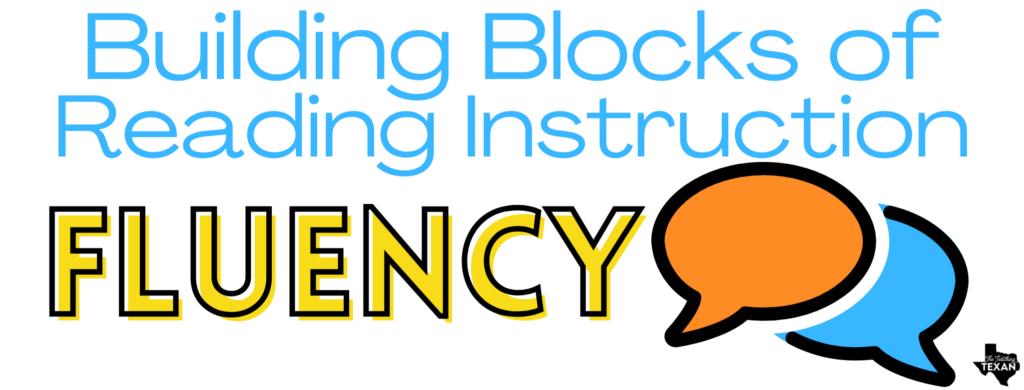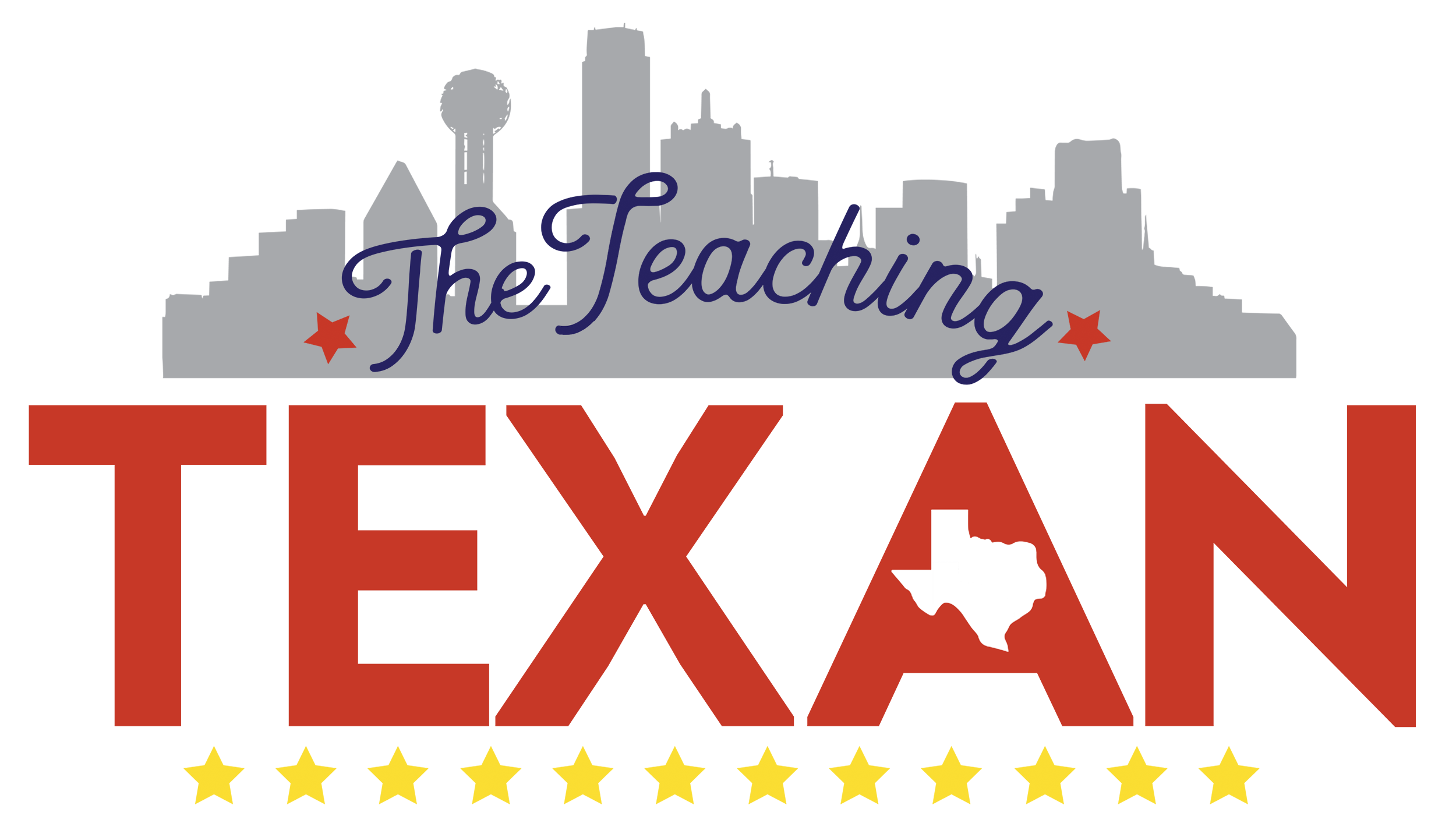Building Blocks of Reading: Fluency
Oh my y’all! This exploration of the building blocks of reading has certainly flown by. How are we already on the final post? Wait, it’s March?! Whaaaaa?? My goodness, 2021 is speeding by!
We’re approaching the top of the hill friends! As we head toward the pinnacle of the building blocks (comprehension) today we will be chatting all about fluency. This is a huge goal of teachers each year – helping their students to become fluent readers within our grade-level context with the hopes each young person leaves elementary school as a fluent reader.

Basically, it’s majorly important y’all. I know we all know this but it’s worth hammering home. In fact, “if readers do not develop adequate levels of fluency, they can become stuck in the middle of the bridge, able to decode words but with insufficient automaticity to adequately facilitate comprehension or enjoy the process of reading. These students typically become our reluctant readers, often with dire consequences for themselves, their future families, and society as a whole,” reports the 2018 International Literacy Association’s quarterly journal.
Let’s define and break it down.
Fluency is made up of three components:
1. Accuracy
First, accuracy. Students must be “pronouncing words the way they commonly are” aka reading the correct words most of the time (Liben and Liben). And if not automatically, then students are able to sound out the word and recognize the meaning as they pronounce it. Decoding is absolutely necessary for this, and a good foundation in phonics definitely helps. Decoding punctuation in particular is an often overlooked component of reading accuracy. Students should know what each symbol means and how to read it appropriately. More specifically: Commas, periods, exclamation marks and question marks. “They need to know how the voice inflects for each type” (Liben and Liben).

2. Rate
Second, the rate at which a student reads aloud aka speed of oral reading. Keep in mind that appropriate read aloud rates vary based on the text that’s being read. A more difficult text will be read more slowly, while a text of short sentences composed of mostly sight words should be read at a faster pace. Remember that “understanding what you read is the goal, whether we’re children or adults, not racing to get through. You may know adult readers who read at very different rates than you do” (Liben and Liben).
3. Expressiveness
Finally, a fluent reader is one that reads expressively, not like a monotone robot. In order to master this skill, students need consistent practice reading aloud and being encouraged to read with expression. We help model this every time we do read alouds with students as young as Pre-K. We’re often their greatest role model for reading with expression! This helps bring the reading to life and convey meaning. It should not be underestimated.
Fluent readers are better equipped for life on many levels. “Less fluent readers, however, must focus their attention on figuring out the words, leaving them little attention for understanding the meaning of text” (Reading Rockets). This can lead to major setbacks in both later education and adulthood.
Try it Today
Attaining fluency is not something that magically happens overnight, but in smaller pieces over time. But, it’s also true that students “can get better at reading something smoothly even within a single time period, say 20 minutes during one class. Their improvement will be palpable” (Liben and Liben). What’s essential is to repeat that small success over and over again until fluency is a habit and reading comes easily.
A few ways to integrate fluency regularly in the classroom are….
Promote Phrased Reading
Since “fluency involves reading phrases seamlessly, as opposed to word by word,” I love to reinforce this skill with weekly poems, some favorites may include “Something Told the Wild Geese by Rachel Field, and Noodles by Janet Wong” (Blau). Beginning with students as young as Pre-K, the first thing I do is called echo reading. I read a line and then students repeat. After they are comfortable repeating a line at a time, by the end of the week they’re repeating whole stanzas in perfectly formed phrases.
You could also write the lines of a poem “onto sentence strips, which serve as cue cards, to show students how good readers cluster portions of text rather than saying each word separately.” Once they’ve mastered repeating after you, “hold up strips one at a time and have students read the phrases” chorally. You can “reinforce phrased reading by using the same poem in guided reading and pointing to passages you read as a class” (Blau).
Readers Theater
Another enjoyable way to give students an opportunity to practice fluency is to have them practice what’s called “Readers Theater”. If you’re not familiar, don’t worry, it requires no theater experience to succeed in this simple activity.
First, find a short script of an easy to understand story. Make sure the reading level is appropriate for the least fluent or strong reader in your class. That way, everyone can be comfortable reading it aloud in class. You may pick a story they know or one they’re reading for the first time. This can also be a great way to review historical events or other subject matter learning objectives! Assign students roles and read from their seats. Encourage them to stand tall when reading, use loud silly voices for characters, and enjoy telling the story. Readers Theater makes a great, fun Friday activity.
Paired/Buddy Reading
Reading with a buddy is easy and fun. You might try pairing students of similar reading abilities, or students with different current reading abilities so the pair is balanced and the stronger reader can model. But always do what works best with your class — sometimes personalities or classroom politics make this more difficult.
First, read the passage around in a whole group setting before sending students off to read to each other. Another opportunity to read aloud! “Paired reading”, Liben and Liben note, “is a great time for you to move around and provide feedback and coaching.” It gives students time to be independent and simultaneously receive individual feedback from both you and their partner.
Guided Reading
With my students, I use guided reading in small groups to promote fluency and work on a lot of other literacy skills. It can be tough to integrate though if you’re not sure how to plan your lessons, keep other students occupied, or use your time with students in small groups. It took me years to get it right. If you’re interested in learning more, it’s a little too big a topic for this blog post, but I’ve put together something a little more in depth here if you’re interested. Guided Reading Academy is officially open for enrollment, but only for the next few days!

It’s been a blast walking through the Building Blocks of Reading these past few weeks with y’all. Can’t wait to hear your favorite fluency strategies! Comment below!
Resources:
Blau, Lisa. 5 Surefire Strategies for Developing Reading Fluency. Scholastic. Accessed 4 March 202.
Fluency. Reading Rockets. Accessed 4 March 2021.
Literacy Leadership Brief. Quarterly Journal. International Literacy Association, 2018.
Know Better, Do Better, Liben and Liben, Learning Sciences International, 2019.
